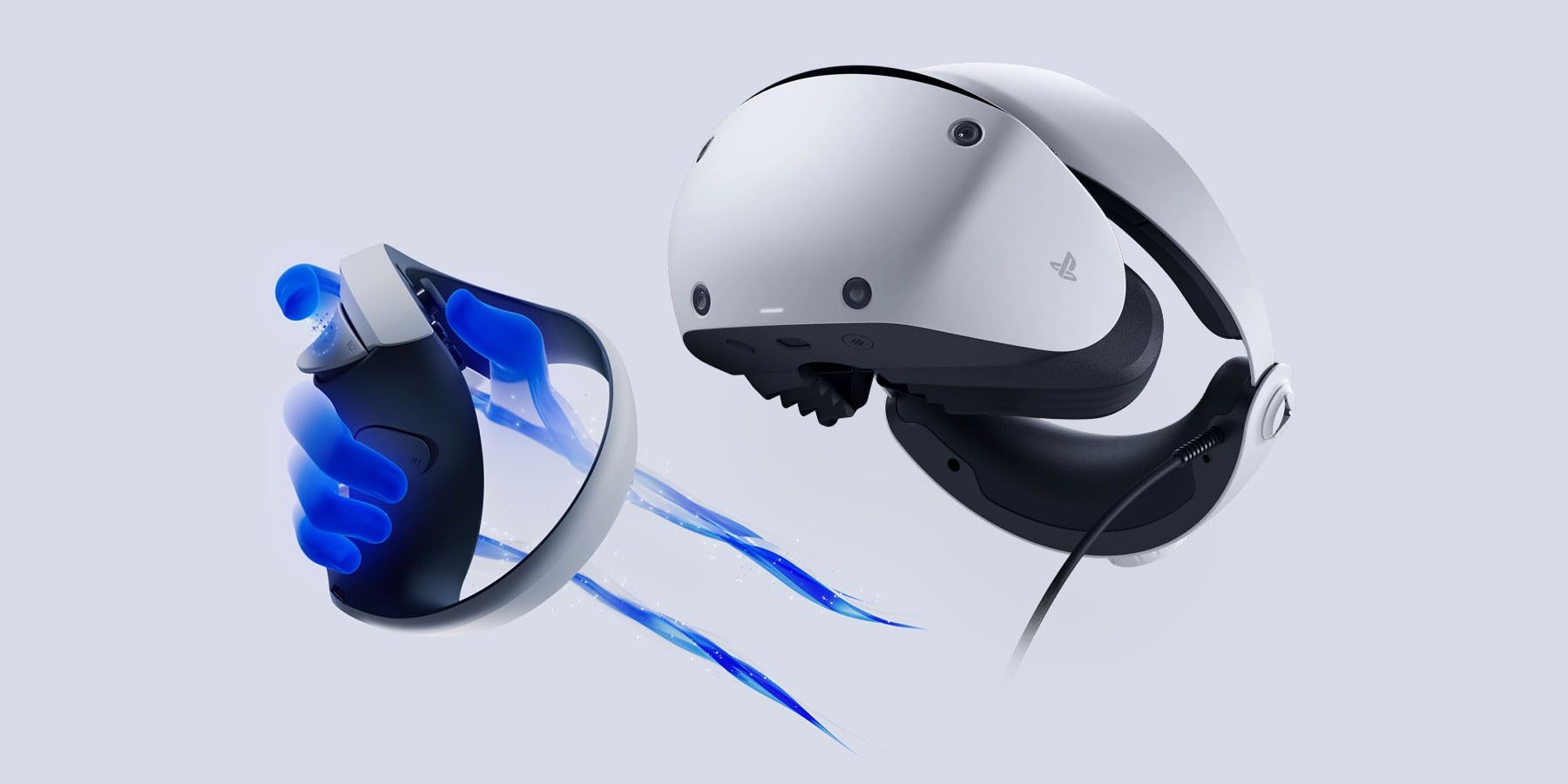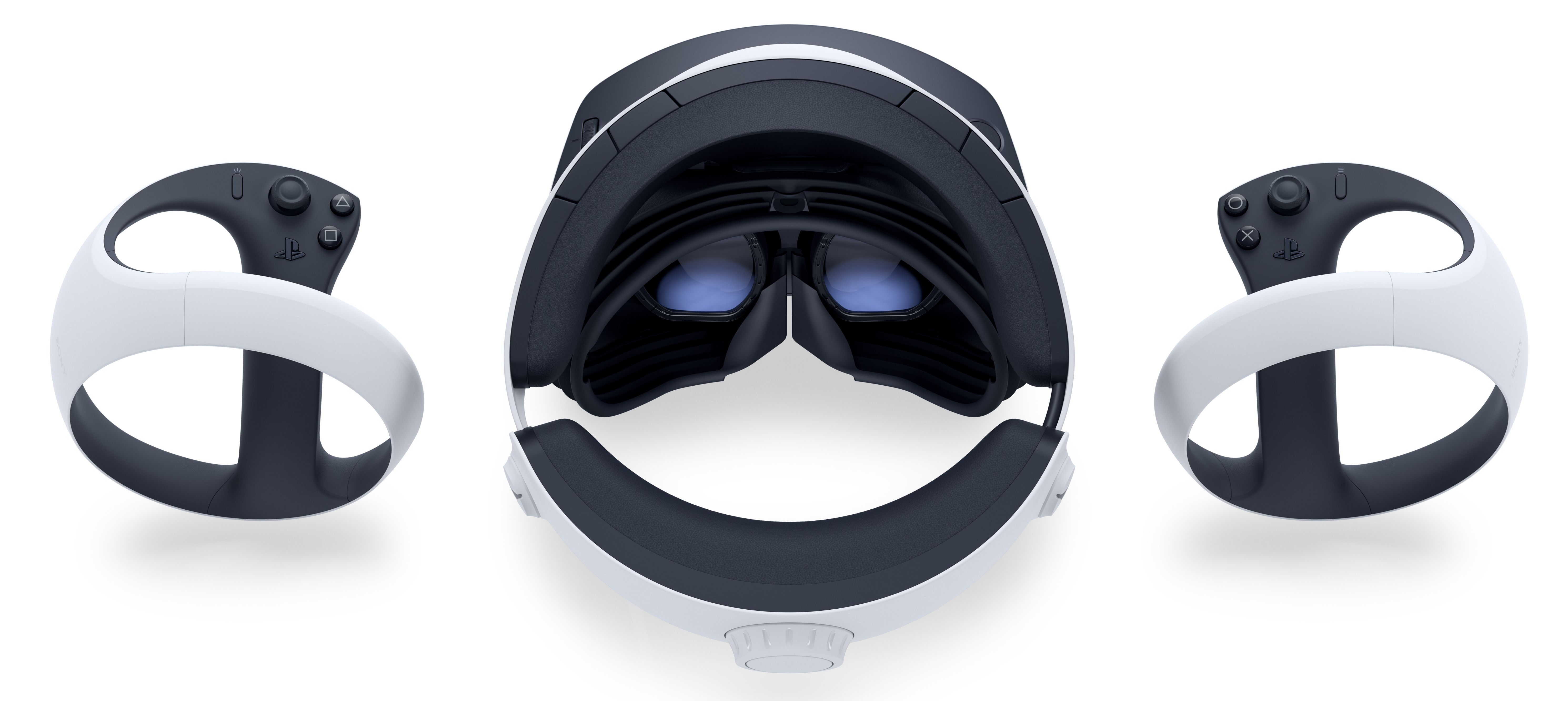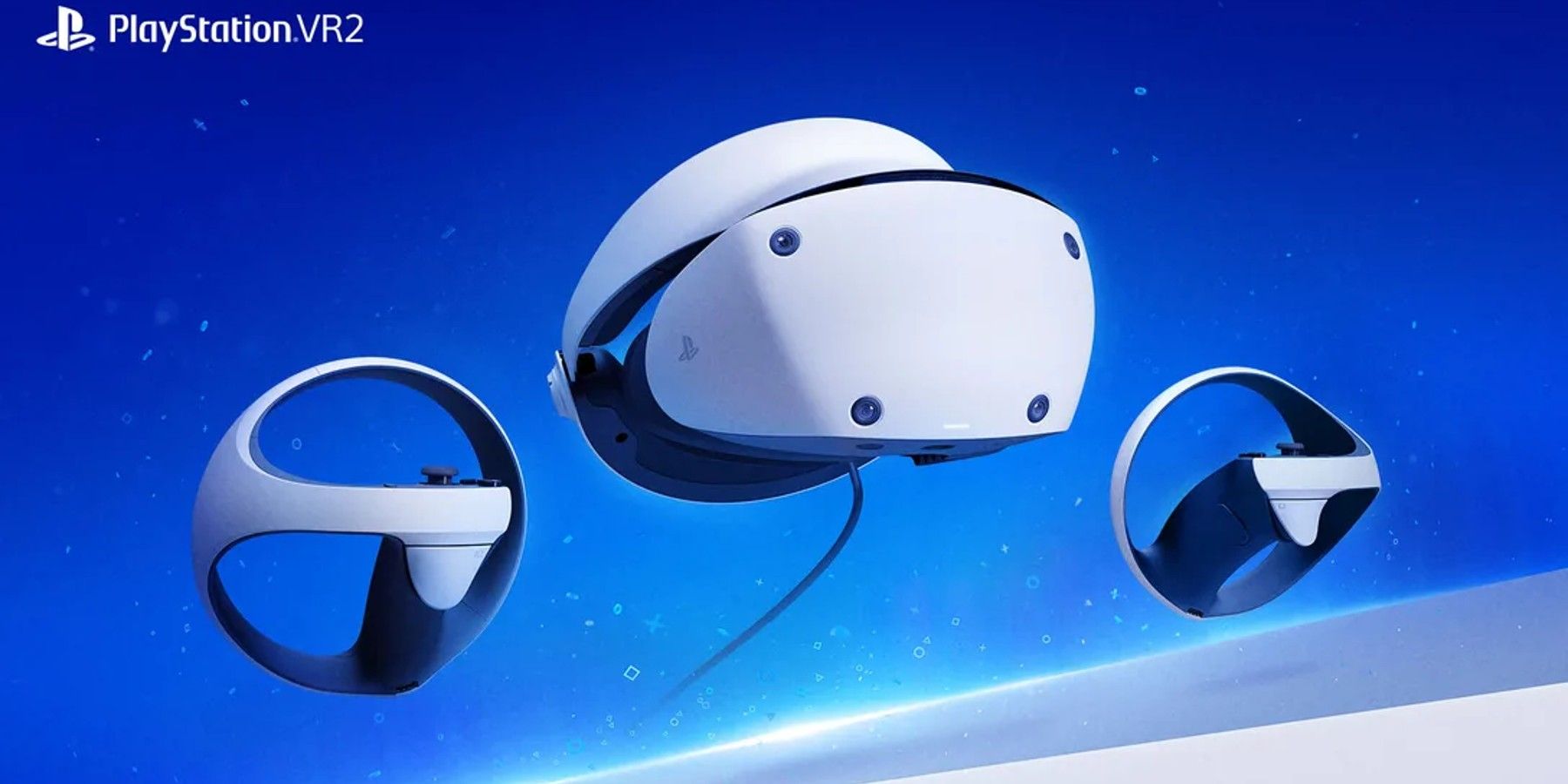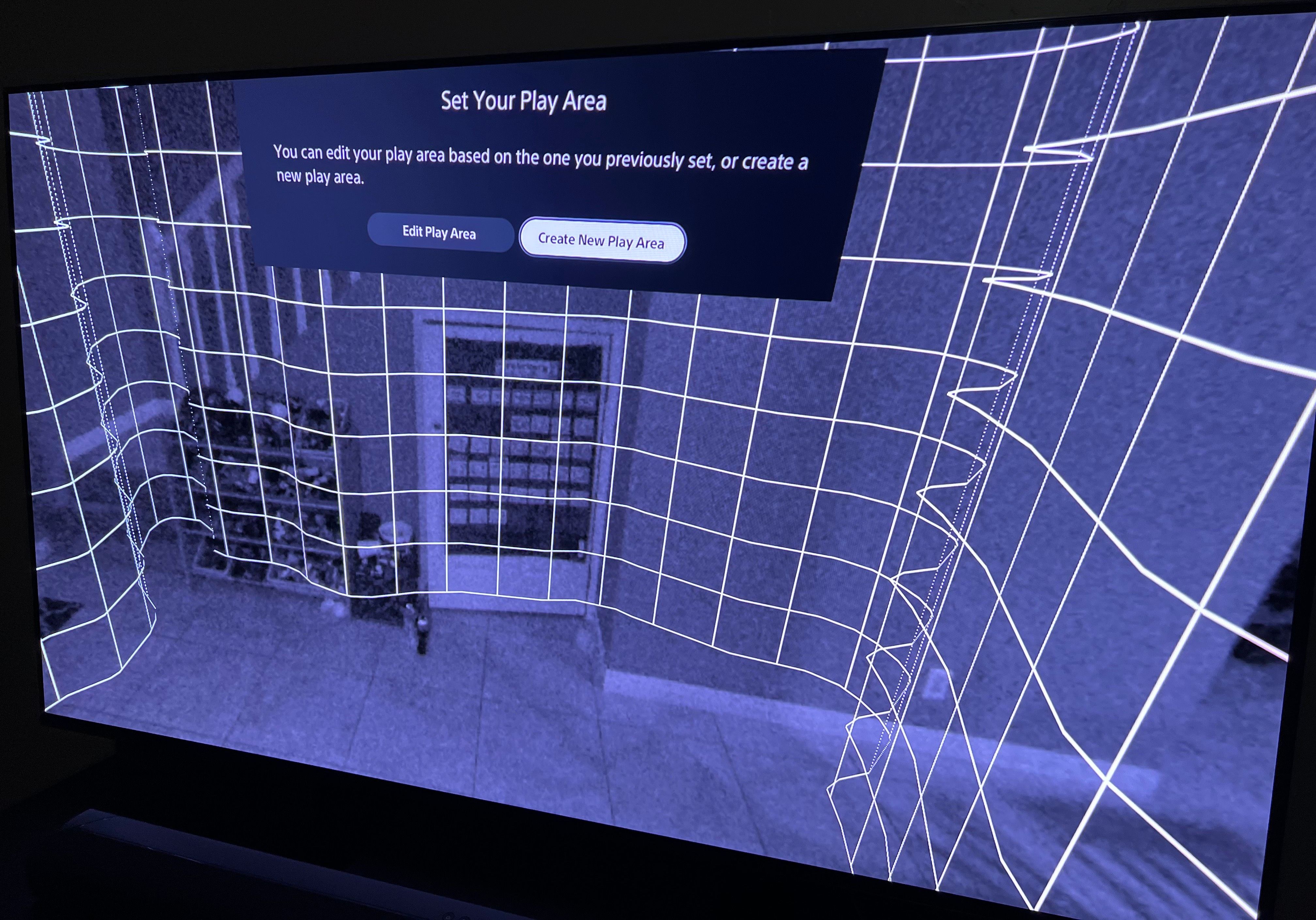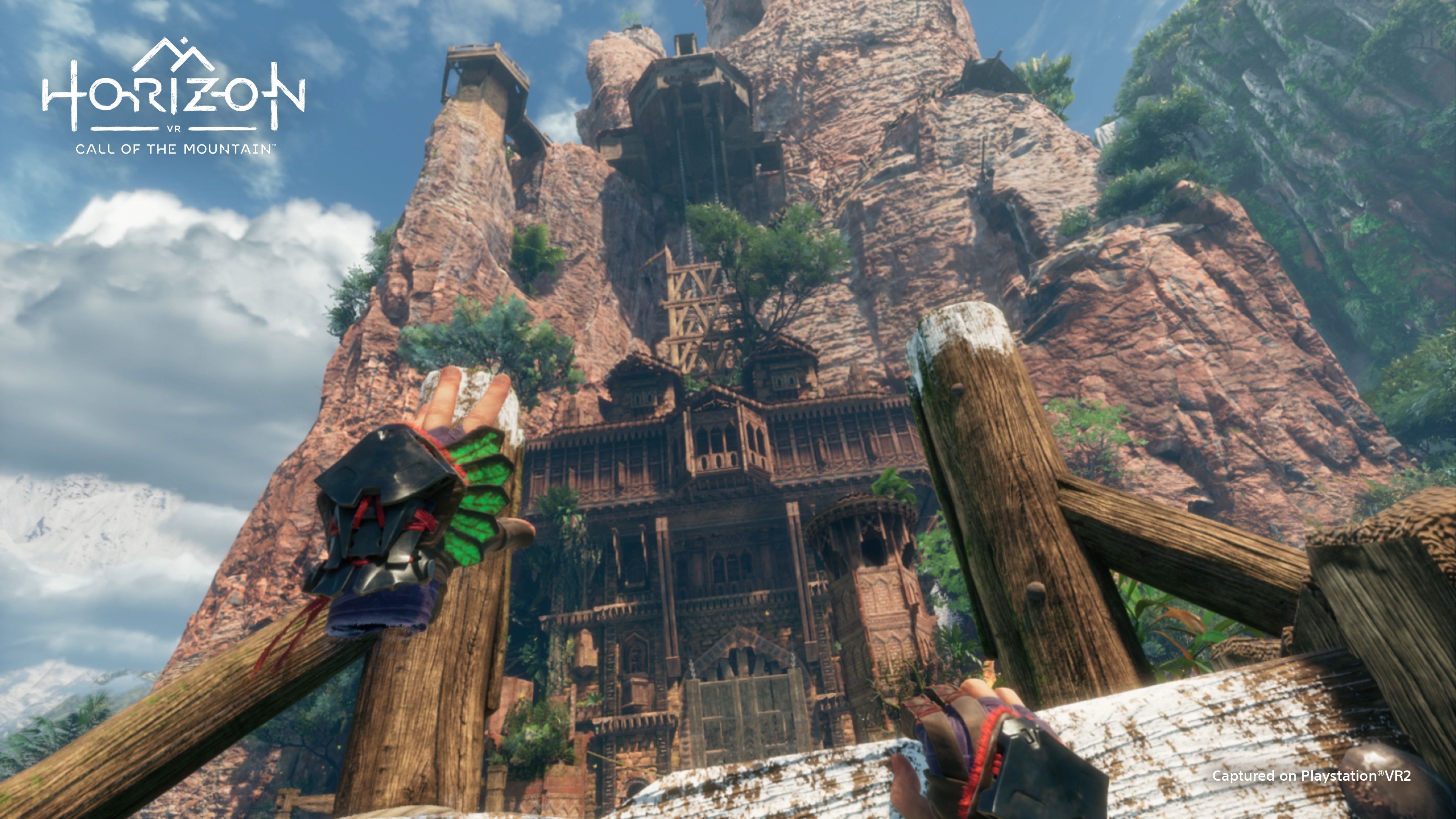Despite the name, the PlayStation VR 2 is more than just a more powerful version of Sony’s original virtual reality headset. From top to bottom, the PS VR 2 reinvents the console VR experience by borrowing a lot from its contemporaries and improving on some of the flaws seen with the first generation.
In terms of its design, the PlayStation VR 2 doesn’t look that much different from the PS VR 1, albeit with a white color scheme to match the PS5 console. It uses a similar headband mechanism that secures the headset to the top of the head, and then slides the VR goggle portion back to lock into place in front of the eyes. Like with the PS VR 1, it’s a lot more comfortable design than some of the other virtual reality headsets out there, as it doesn’t put direct pressure on the eyes. On top of that, the sliding mechanism makes it easier to wear glasses while using the PS VR 2.
Putting on the PlayStation VR 2 headset is a fairly simple process. First, the user pulls the adjustable back portion of the headband to fit around their head. Then, they twist a knob at the back of the band to tighten and secure it in place. And finally, pressing a button on the visor portion allows it to slide back and align with the user’s eyes. Removing the headset is just as easy thanks to a quick-release button on the headband’s knob.
The PS VR 2 feels snug but never restrictive or too tight. It doesn’t slide out of place or lose tension on the user’s face while moving around, and the material around the lenses helps block out any outside light or distractions. The headset isn’t too cumbersome or heavy either, which allows the user to get in longer VR gaming sessions than they might otherwise.
While putting on the PlayStation VR 2 is a fairly familiar experience, that’s where most of the similarities stop. This is an inside-out tracking VR headset, which means it does not need trackers or cameras to determine the user’s or the controller’s movements. Instead, a set of four cameras on the front end of the headset register head movement and determine how to adjust the picture in-game.
What’s great about the inside-out tracking right off the bat is that it eliminates some of the limitations when it comes to a play area. Rather than having to stand in front of the TV or wherever a camera is mounted, the user can find whatever section of a room allows for the most space to move around. Even playing VR games that support seated gameplay won’t require the user to be in any specific position to start. They create the play area by telling/showing the headset where the available space is.
Inside the PS VR 2 headset are two 2K OLED displays that support up to 120Hz. Immersion is the number one selling point for virtual reality and these displays bring a clarity that is incredibly impressive. As long as the design can support it, the headset’s displays deliver a level of detail that is instantly awe-inspiring.
Some hardware and software bells and whistles further deepen that immersion by making sure each individual user gets the best experience. Eye-tracking software is shockingly good and allows the headset to bring into focus whatever the user is looking at. The wide angle of the displays broadens the picture into the user's peripherals to ensure that it doesn’t feel like looking through a pair of binoculars. And an easily accessible lens adjustment wheel on the top of the headset helps match the spacing between a given user’s eyes.
The tech behind the PS VR 2 headset is rock solid and capable of delivering high-quality visuals that are jaw-dropping. In a lot of cases, virtual reality users have to make adjustments to their experience in order to get the most out of a headset. But where the PS VR 2 is concerned, Sony has outfitted the headset with enough adjusters to suit any user regardless of head shape, eye spacing, whether they wear glasses, etc.
For a little added immersion, the headset also includes haptic feedback that is subtle but effective (where supported). Basically, if something was passing by in-game or interacting with the player character, the headset would give a slight pulse in the same way controller haptics do.
Of course, visuals are only part of the equation for genuine virtual reality immersion, with sound being just as crucial for that sense of space and place. Each PS VR 2 headset comes with a proprietary earbud apparatus that docks into the back part of the headset’s headband and secures in place. Then the ear buds come down from the left and right side of the band and can be secured in each ear. The PS VR 2 does come with three sizing options for the ear bud cups but those are still not foolproof when it comes to getting a snug fit. Still, the setup works well for easily accessing and then plugging or unplugging the ear buds.
Audio quality is surprisingly good on the earbuds thanks to the Tempest 3D tech on the PS VR 2. The headset’s tracking will determine the position of the user’s head and ensure the audio sources come from the correct direction. It’s not the top-of-the-line audio experience but it’s very good and more than enough to complement the headset’s visuals.
Two other small but potentially important pieces of the PS VR 2 are on the underside of the VR goggles: the microphone and the pass-through button. In our review process we didn’t get much use out of the microphone but Horizon: Call of the Mountain did use it to create the sense that we were blowing on objects like a pan flute in-game. The pass-through button, on the other hand, is a huge boon, as it uses the headset’s cameras to show exactly what is in front of the user. It can get disorienting playing a VR game for just a few minutes, but the pass-through button allows for quickly pausing the game and showing the user where they are in a room.
PS VR 2 Controllers are a Huge Leap Forward
Sony has also completely revamped the control system for the PS VR 2, trading the Move controllers for a set of controllers that look more like those included with the Oculus Quest. With round hoops on the bottom seemingly to protect the wrists and hands from bumping into anything while playing, the controllers are packed with cool features.
But just in terms of their function, the PS VR 2 controllers are like two flight sticks with a joystick and a set of two face buttons on each of them. They both also have an adaptive trigger for mimicking the tension of performing certain actions, and a wider button (L1 or R1) built into the grip.
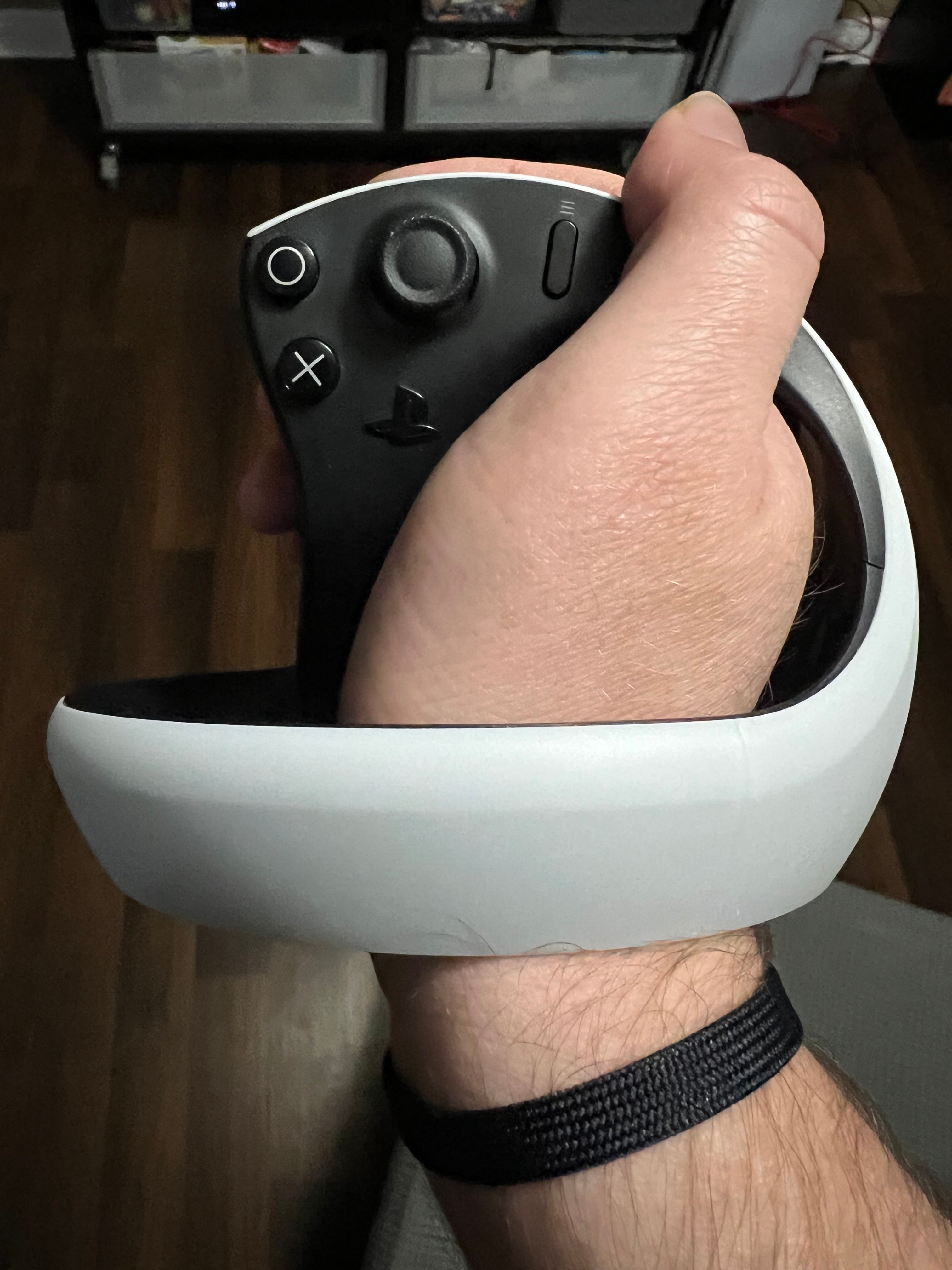
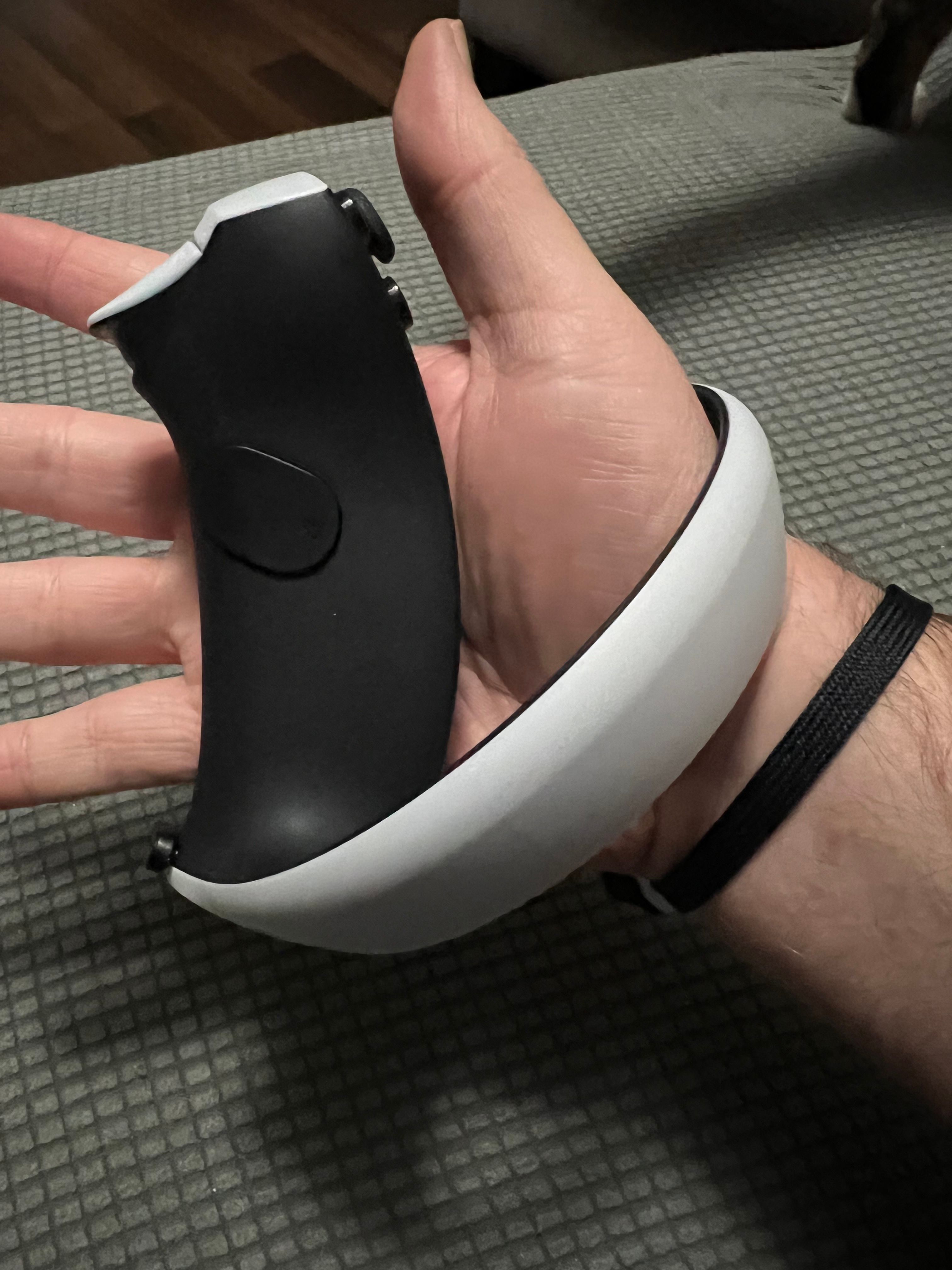
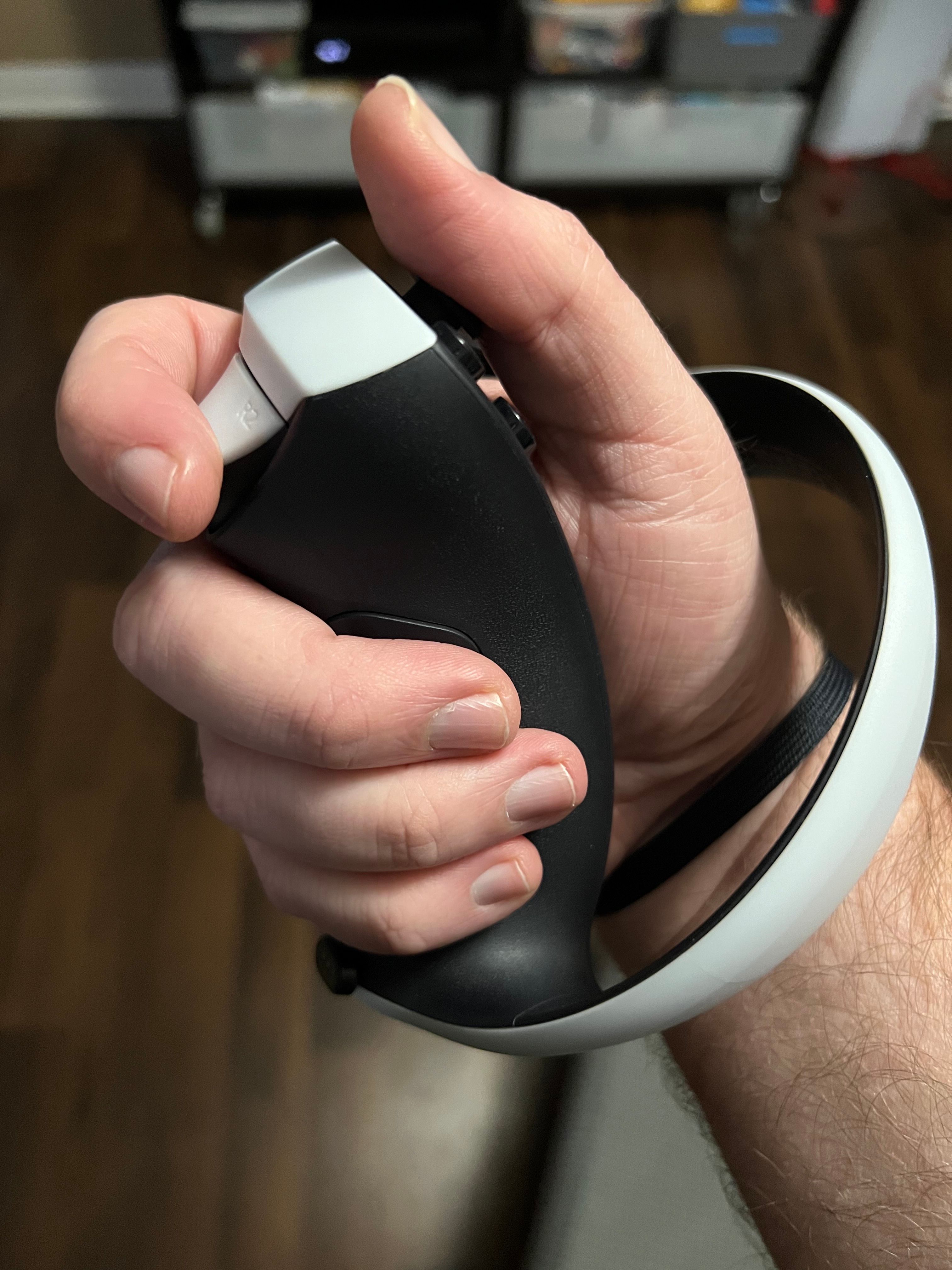
Whether it’s a game that uses traditional joystick movement as well as motion control or one that is more motion-heavy, the controllers work very well. Outside an isolated incident where the headset lost tracking of the left controller and a restart was required, the headset did very well to register where each was in relative space. More importantly, the design of the controllers allowed for more realistic interactions like grabbing a ledge or firing a gun.
In general, the PS VR 2 controllers are on par with the best virtual reality controllers that are available today. And although it only saw some small use in Horizon, the controllers do have finger touch detection so your avatar can do things like point, make a “peace” sign, or ball up their fist. It’s a cool detail that makes it feel like the user is doing more than just waving some static hands in the air.
Setup with PlayStation VR 2 is Easy
Outside the restriction of having a wired VR headset, the experience of setting up and using the PS VR 2 is quick and easy. The software will walk the user through a few steps that will do everything from helping them adjust the lens spacing to fine-tuning the eye tracking. It also uses the cameras to determine the amount of space available to the user for their virtual reality gaming. It finds the contours of a wall, couch, table, or practically any obstacle that might get in the user’s way and creates a play area to work with. The user can also adjust the play area if the tracking did a bad job, but in our testing, it was very accurate.
For room-scale experiences, the PS VR 2 is pretty demanding, requiring a 6’ 7” X 6’ 7” chunk of available space. But those with smaller rooms can carve out as big of a play area as possible and still get an enjoyable VR experience. It’s very easy to switch from standing VR to room-scale to seated VR as well thanks to a quick settings menu that pops up anytime you press the options button. The headset even remembers the play area it created if using the same room.
The VR headset’s wire can occasionally get in the way, but it’s not nearly as cumbersome as the 1.0 headset’s bulky option. Regardless of if we were doing a room-scale experience like What the Bat or seated to play some Moss, the PS VR 2 didn’t experience any major problems recognizing the controllers or our movements. A lot of the hangups with VR manifest in its inability to “fit” in a space, but the PS VR 2 has all the options and adjustments to make it work practically anywhere.
VR Game Testing on PS5
Horizon: Call of the Mountain is without question the showpiece for PS VR 2, taking full advantage of every bell and whistle that the headset has to offer. It’s an incredible VR experience that adapts the main game’s traversal and combat to a more constrained setup. Combat is where the game most deviates from its predecessors, confining the player to a “circular arena” where they can dodge around a robo-animal and fire arrows at its weak points.
Climbing in Horizon: Call of the Mountain, however, is an impressive approximation of the real thing. Players will reach out for different handholds and “pull” themselves up cliffsides, ropes, or across vines. It’s such a simple gameplay mechanic but it is executed so well from a visual and a motion control standpoint that it’s impossible not to feel that immersed. Climbing is also a bit of a workout to boot.
Horizon: Call of the Mountain is the game to get for PS VR 2 to show off everything the headset can do, but it’s not the only great game made available for the platform. There are a ton of VR titles that have been ported over to PS VR 2 that utilizes a lot of the system’s key components. Most don't use the finger tracking or have support for room scale, but the most important thing is that no functionality is lost in the porting process. None of the games felt like lesser versions of their Quest/Vive/Index counterparts; gameplay is just as immersive and complex as anywhere else.
Games we tested during the pre-release review process included Horizon: Call of the Mountain, Kayak Mirage: VR, Tentacular, After the Fall, Moss Books 1 and 2, What the Bat, Star Wars: Tales from the Galaxy's Edge, and Jurassic World Aftermath. All offer a different type of VR experience and all work very well on the PS VR 2 and are worth checking out.
No doubt it will take time for developers to take full advantage of the PS VR 2 in the same way that Call of the Mountain does, but eventually features like finger touch and eye tracking will just be part of the experience. In the same way that Sony put a lot of emphasis on the Dual Sense's feature-set during the PS5's launch period, developers are going to need to consider the PS VR 2's unique features to make their games stand out.
Virtual reality is a tough sell for a lot of gamers, seen as a gimmick or a fad with not a lot of staying power. It’s also an expensive proposition that isn’t going to be for everyone. Those who do jump into the PlayStation VR ecosystem, either for the first time or a second round, will find a headset/controller combo that has a lot to offer. Not to mention the launch lineup boasts a diverse library of titles highlighting the best of VR and, in Horizon: Call of the Mountain’s case, the full potential of this platform.
Price and interest are going to be Sony’s two biggest obstacles when it comes to selling PS VR 2, but there’s no denying that what it has built is impressive. Its simple setup, thoughtful ease of use, and some clever control features all work to help Sony’s headset compete with the best of them.
PlayStation VR 2 releases February 22, 2023. Game Rant was provided a pre-release retail unit for the purposes of this review.

